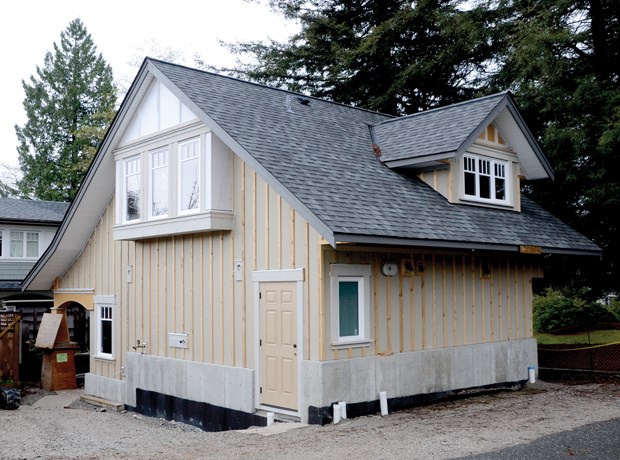Plunking down coach houses on single-family lots might be in ideal way to keep family close by, but it won't make your property fetch more on the market and it won't result in a higher tax assessment.
Those are two conclusions offered by Paul Borgo, deputy assessor with the BC Assessment Authority, and Paul Sullivan, a market analyst with expertise in property taxes and appraisals.
City of North Vancouver council invited Borgo and Sullivan to speak on how allowing coach houses and secondary suites on singlefamily lots, as proposed in the draft official community plan, would affect tax assessments.
Council watcher Kerry Morris had been collecting signatures for a petition calling on council members to reject the proposed OCP based on the worry BC Assessment will burden homeowners with higher appraisals due to the development potential of city properties. By his estimates, every single family homeowner would experience a $650 to $1,000 bump on their tax bills.
While the draft OCP does foresee allowing both secondary suites and coach houses, it would not allow an increase in density on a single-family lot, meaning the primary home on the lot must be smaller because the square footage must be shared between the two buildings.
"From the perspective of density driving value, because there is no increased density, I would project no increased value due to that. It simply isn't occurring," Borgo said.
Much of Borgo and Sullivan's presentation was clarifying the often murky waters that is property assessment vs. tax rates vs. the amount owing on a city tax bill.
Properties are assessed on their land value as if nothing is built on it, and additionally on the "improvements" of the home itself. A local government then uses those assessed values to set tax rates. If a home's assessment goes up more than the average assessment, the owner can expect a higher tax bill.
"Assessment is separate from the tax rate," Borgo said. "Prudent councils adjust their budget for their needs and they adjust their tax rate too."
As there is no evidence building coach houses increases value, developers aren't keen on including them in developments, because they tend to be more cost and trouble than they're worth, according to Sullivan.
Sullivan presented council with some data he collected observing the sale prices of properties, with and without coach houses, in Vancouver where property owners are allowed extra density on their single-family lots if it comes in the form of a coach house.
"You can see a bit of a trend. Not too much of a spread if any.
"I can tell you from the one laneway (house) I built, I would never do it again. They're an extraordinary cost per square foot because there are no efficiencies. You have to upgrade your sewer, water, electrical, your access, your parking.
"They're difficult to build and the price per square foot to build them can be almost double," he said, noting that the City of Vancouver expects coach houses to cost $240,000 to $270,000 to build.
Sale price per square foot goes down if the property has a laneway house, according to his study.
While they might be a mortgage helper, homeowners don't necessarily want to make the sacrifices that come with coach houses in exchange for rental income, Sullivan said.
"You give up things when you build laneway houses. You give up your backyard. You give up your garage. You give up some privacy," he said.
The main exception where coach houses prove worthwhile, Sullivan noted, is when emptynesters want to downsize while passing on their homes to their kids looking for space to raise a family of their own.
Council is holding a town hall meeting to specifically address the two-suite policy and concerns arising from it. The meeting will be held next Tuesday, April 15, 6:30 p.m. at Queen Mary Community School gymnasium, 230 East Keith Rd. in North Vancouver.



